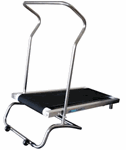There are many benefits environmentally friendly pools offer including lower electricity bills, reduced water and energy waste and reduced chemical usage. Going “green” with your pool doesn’t require an expensive overhaul, but rather a few simple changes. The following five eco-friendly pool tips can help save you money, reduce your pool’s environmental impact and make your pool a healthier one for your friends and family to enjoy all summer long.
Energy Efficient Pool Pumps
When it comes to pool pumps, there are more options available today than ever before. Newer model pumps are available in dual-, four- and variable-speeds that increase energy efficiency by reducing the day-time flow rate while increasing the total amount of run time. A lower flow rate for a longer period of time uses less energy and makes less noise. Longer circulation periods also help to decrease algae growth, reducing the amount of cleaning time and chemicals needed. A more efficient pool pump means your filter has to work less, leading to even more savings.
Pool Covers
Pool covers are the easiest way to cut back on water usage and heating costs. Pool covers reduce water evaporation so you have to refill your pool less often, saving you money and making the planet smile. If you have a heated pool, solar pool covers harness the power of the Sun to heat your pool naturally, greatly reducing your overall energy usage and costs. Pool covers are also useful in keeping unwanted debris from being blown into the pool.
Natural Pool Cleaners
There are many benefits to switching to natural pool cleaners and chemicals. Pool cleaners and chemicals made of naturally-occurring, sustainable materials are less harsh compared to man-made pool chemicals and are better for both your family’s and the environment’s health. A popular line of natural pool cleaners is Natural Chemistry. Natural Chemistry pool chemicals are made from naturally-created enzymes and use a mixture of malt, molasses and citrus-based botanicals to keep your pool clean and sparkling.
Salt Water Chlorinators
While having a salt water pool doesn’t completely take the place of other pool chemicals like chlorine, it does mean that you’re going to be using a lot of them, reducing pool maintenance costs and dry and itchy skin that results from swimming in a chlorine-filled pool. When salt water is added to swimming pools, chlorine generators use a low voltage electrical charge to convert salt ions into chlorine. While the initial cost of a pool salt chlorinator is not cheap, it’s a worthy investment because it can end up saving you thousands of dollars in pool maintenance and cleaning costs.
Automatic Pool Cleaners
Automatic pool cleaners make cleaning the pool practically effortless, more efficient and ensures the task is not overlooked. Skipping regular pool cleanings allows algae growth to flourish and more debris to build up in the pool filter, making your expensive pool filter and pump work harder. Robotic pool cleaners keep your pool clean and running efficiently.
There are several easy ways to “green” your pool that will help reduce environmental impact, lower maintenance costs and create a healthier swim experience for your family and friends. For more information about optimizing your pool system visit The Pool Guy Store and we’ll be more than happy to help!







